Bristol Blenheim, The Glebe, Donegal, April 1942
A Bristol Blenheim IV bomber, serial number N3533, was reported to have made a crash landing at 12:50 on Sunday April 19, 1942 at Glebe, Linsfort near Fort Dunree in the far north of County Donegal in the north of Ireland (Republic of Ireland). The Irish Army were as always quickly on the scene to assist those involved. The Irish Military report on this crash is held in the Military Archives in Rathmines, Dublin City. The report (Ref G2/X/1004) mentions that injuries to the crew men were facial abrasions only. They were taken to a local Irish Army base, Fort Dunree, where they were treated for their injuries. The crew of four crew reported they were on a training exercise with the army and had gotten lost and run low on fuel. At 21:50 that Sunday evening the crew were allowed to leave and were brought to a border crossing at Bridgend and handed over to the authorities in Northern Ireland. This took place at a time when the policy of the Irish authorities was changing to one of releasing almost all Allied airmen who found themselves in Ireland.
The aircraft carried a crew of four, and their names and addresses were recorded by the Irish Army before their release. After some research it was possible to identify their correct names and serial numbers and luckily contact has been made with three of their families and Mr Frank Newbold who was on the aircraft.
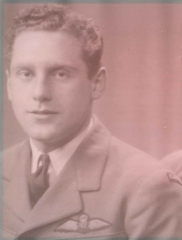 Donald F Bertrand, RCAF |
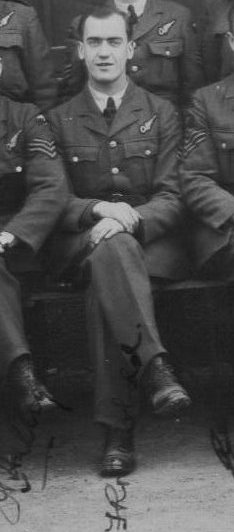 Frank Newbold RAF |
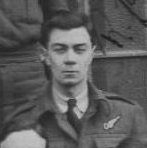 Renard Landall-Smith RAF |
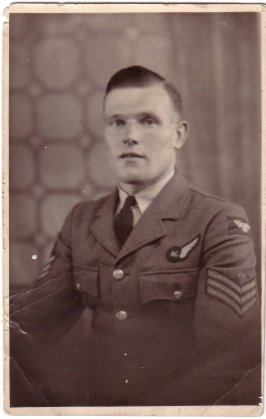 Clarence Morton RAF |
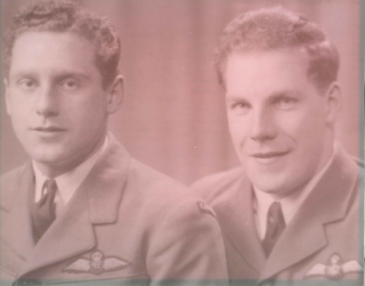 Donald
Francis Bertrand was the pilot of N3533. He came from
Ontario in Canada. He enlisted in August 1940 and completed his
training by almost exactly a year later and sailed for England.
His name was found on a shipping manifest arriving in Belfast on
the 'Bayano' on August 1st, 1941. He was at that time a Sergeant
Pilot with the Royal Canadian Air Force. 143 Squadron records
show that Sgt Bertrand was posted into the unit on the 15th
April for flying duties with the unit. He had been previously
with 255 Squadron who flew Beaufighters at that time. He
returned to Canada in 1943 and served as an instructor at number
4 and 7 Bombing and Gunnery Schools for the remainder of the
war. Don's grand daughter and her husband were kind enough to
send on the war time photo of Don along with his brother Norman
Bertrand, also a pilot in the RCAF. Donald passed away in 2008.
His obituary reads:
Donald
Francis Bertrand was the pilot of N3533. He came from
Ontario in Canada. He enlisted in August 1940 and completed his
training by almost exactly a year later and sailed for England.
His name was found on a shipping manifest arriving in Belfast on
the 'Bayano' on August 1st, 1941. He was at that time a Sergeant
Pilot with the Royal Canadian Air Force. 143 Squadron records
show that Sgt Bertrand was posted into the unit on the 15th
April for flying duties with the unit. He had been previously
with 255 Squadron who flew Beaufighters at that time. He
returned to Canada in 1943 and served as an instructor at number
4 and 7 Bombing and Gunnery Schools for the remainder of the
war. Don's grand daughter and her husband were kind enough to
send on the war time photo of Don along with his brother Norman
Bertrand, also a pilot in the RCAF. Donald passed away in 2008.
His obituary reads:
BERTRAND, Donald (Don) WWII Veteran
(RAF/RCAF- Pilot) Retired Chief of Air Traffic Control In
Ottawa, Ontario on Monday, December 22, 2008. It is with
profound sadness yet incredible memories that we announce
the death of our husband, father, grandpa and friend, Don
Bertrand, peacefully at home with his family by his side. He
was the devoted husband, partner and best friend of 64 years
to Audrey Bertrand (Villeneuve). Always a fighter, he never
stopped passing on his unparalleled determination, wisdom,
and passion for life. It was an honour to be part of his
family and a privilege to be one of his friends. Loving
father of the late Ken (Nicole Roussel), Susan (Tony Fisher)
and Nancy (Roger Brule). Greatest Papoo ever to Christian,
Jonathon, Jenna and Jessica. Son of the late Joseph and
Muriel Bertrand. Brother of the late Norm (Pat), the late
Mary (the late Edward) and Eileen. A special thanks to all
of the dedicated caregivers who were so much a part of his
life. A memorial mass to celebrate Don's life will be held
Tuesday, December 30, 2008 at 2:00 p.m. at Holy Cross
Parish, 685 Walkley Road, Ottawa.
Published in The Ottawa Citizen from December 27 to December 29,
2008
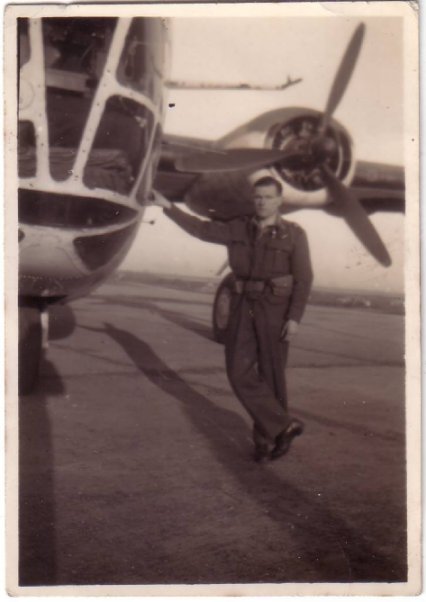 Sgt Clarence
Morton was operating as a wireless telegraphy (W/T)
instructor in the aircraft during this flight. Clarence, or
Clarry, as he was known to his family, came from Cleethorpes in
Lincolnshire, England. He enlisted with the Air Force in May
1940 and progressed through his training in wireless telegraphy
and aerial gunnery throughout 1940 and 1941. His initial posting
was to 404 (RCAF) Squadron in December 1941, along with crew of
P/O A G E Harding and P/O J F Clark. His first combat
missions being flown from the start of February 1942. At
the end of March 1942, he and six crews were posted to 143
Squadron. As described below, this unit was carrying out
training duties at this time. He stayed with 143 Squadron
until the autumn. When they converted to two seat
Beaufighters, the WO/AG's like Clarence were no longer needed
and were posted to 86 Squadron in October 1942. Similar to
the 143 Squadron situation earlier in the year, 86 Squadron was
engaged at that time is preparing crews for the new 160
Squadron, which in turn was being posted overseas. He was
posted to 160 Squadron in November 1942, being then sent to
India to fly in Liberator four engine bombers with that unit. He
returned to the UK in April 1944 and was based at a secession of
training units, probably in the instructing role until his
discharge in January 1946. He does not appear to have suffered
prolonged injury after the crash as his service file records no
long period of hospitalization. Clarry passed away in 2004 in
Cleethorpes at the age of 87.
Sgt Clarence
Morton was operating as a wireless telegraphy (W/T)
instructor in the aircraft during this flight. Clarence, or
Clarry, as he was known to his family, came from Cleethorpes in
Lincolnshire, England. He enlisted with the Air Force in May
1940 and progressed through his training in wireless telegraphy
and aerial gunnery throughout 1940 and 1941. His initial posting
was to 404 (RCAF) Squadron in December 1941, along with crew of
P/O A G E Harding and P/O J F Clark. His first combat
missions being flown from the start of February 1942. At
the end of March 1942, he and six crews were posted to 143
Squadron. As described below, this unit was carrying out
training duties at this time. He stayed with 143 Squadron
until the autumn. When they converted to two seat
Beaufighters, the WO/AG's like Clarence were no longer needed
and were posted to 86 Squadron in October 1942. Similar to
the 143 Squadron situation earlier in the year, 86 Squadron was
engaged at that time is preparing crews for the new 160
Squadron, which in turn was being posted overseas. He was
posted to 160 Squadron in November 1942, being then sent to
India to fly in Liberator four engine bombers with that unit. He
returned to the UK in April 1944 and was based at a secession of
training units, probably in the instructing role until his
discharge in January 1946. He does not appear to have suffered
prolonged injury after the crash as his service file records no
long period of hospitalization. Clarry passed away in 2004 in
Cleethorpes at the age of 87.
His son was kind enough to send on copies of his service record,
photos and the scanned page from his log book below, where P/O
Harding's name can be seen. Squadron records from 143 Squadron
show that Sgt Morton was involved on a daily basis in March and
April as an instructor to the Wireless
Operators/Observersundergoing training. He was part of a crew
which on 7th of April were forced to turn back from a flight to
Carlisle due to poor weather.
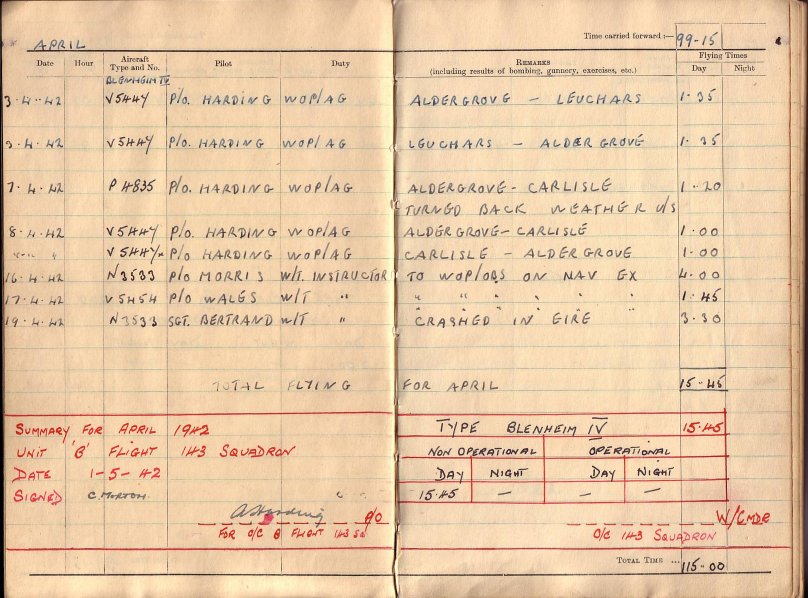
Sgt Renard Lendal Smith was undergoing training as a
Wireless Operator Observer during this time with 143 Squadron.
This would have prepared him to take up these duties in the two
seat Beaufighter aircraft which the Squadron were due to obtain
in the coming months. Renard, or Rennie to his family, came from
Dunbarton in Scotland, born in 1919. Squadron records show that
he returned to 143 Squadron on 20th of August from Aircrew
Convalescent Depot (ADC) at Hoylake. He was next posted to
Uxbridge on 21st October 1942, listed as non-effective. At
this time the squadron was based at Docking and a few days later
moved again to North Coates. His daughter was able to send on
this newspaper cutting showing her father during his
recuperation in Scotland!
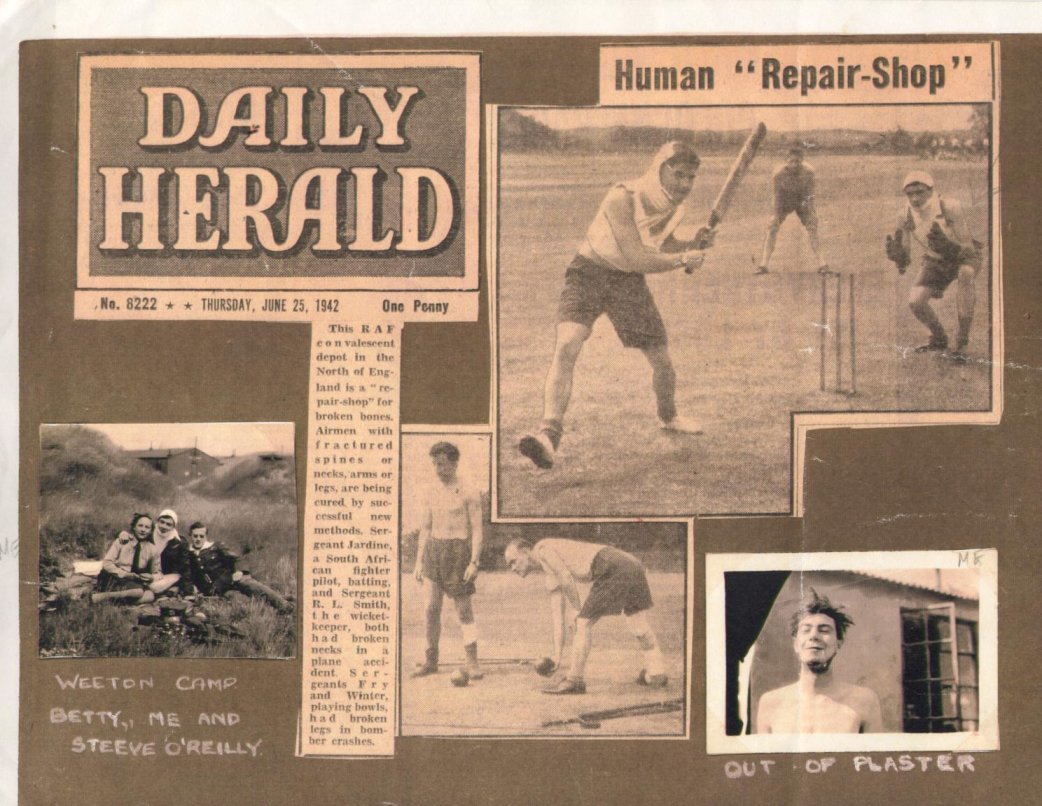
Sgt Smith returned to 143 Squadron and continued to serve in the
RAF. His daughter understands he went on to serve in Malta and
over Yugoslavia. His name appears in the London Gazette dated 16
January 1945 where he was appointed to Commission as an Acting
Pilot Officer (Officer Serial Number 187595) in the
Administrative and Special Duties Branch of the RAFVR. This
suggests that he had finished flying duties at that time as
flight crew would be found in the General Duties Branch. His
name appears in the 14 March 1950 Gazette as being promoted to
Flying Officer rank in the Training Branch of the post war
RAFVR. He left the RAFVR the following year per the London
Gazette.
He married in 1945, went back to study Accountancy at Edinburgh University and worked for HM Customs until his retirement. Rennie Smith passed away in April 2001.
The final member of N3533's crew was Sgt Frank Roy Newbold
originally from Derby. Frank's parents were Elsie and Frank
Sidney Newbold. In 1939, on the register taken that year,
Franks father is employed as a Mechanical Inspector - Aero
Engine manufacturer in Derby. Frank himself is living
elsewhere in the city working as a Civil Service audit
clerk. He married Joan in 1947
Happily enough, it was possible to contact Mr Newbold in 2011
and he was able to pass on his recollections of his service and
memories of the flight and crash. In a letter from that year he
wrote:
The Blenheim in the accident had
three crew - pilot, navigator, and rear gunner. There was
also a passenger who came along for the ride, and with whose
authority I do not know. The aim was to fly to Rockall, in
the Atlantic west of the Hebrides, a small rock sticking up
a few feet out of the water, and a useful if difficult
navigational test of accuracy. The navigator sat either in
the aircraft nose or in a seat by the pilot, but at a lower
level. On this flight the passenger took the navigator's
seat by the pilot, and the navigator, for landing and take
off, sat on the knees of the passenger, who gripped him
round the middle.
For this particular forced landing, I was the one who had to
sit on the passengers knees with only his arms to hold and
restrain me in the forced landing. Otherwise I sat in the
extended nose to do the navigating work. After reaching and
circling Rockall we set course southwards for the nearest
part of the north coast of Ireland with the intention of
then heading eastwards when the coast was reached. Then we
headed towards Aldergrove in the distance, our destination
for landing, and the coast was followed for some of the
route. The weather was clear for visual decision on this.
Our height was up to 2000 feet, but we also flew at
intervals down to 50 feet, as usual in Coastal Command.
The passenger was in the seat next to but lower that the
pilot, which was the seat which should have been reserved
for me as navigator, during take-off and landing.
On one occasion on the flight back and during the coast
crawl the pilot flew the aircraft into an entrance into the
cliffs which proved to be a circular and narrow bay, and was
able to bank sharply, practically scraping the cliff face
before emerging into safety, and I will say that he acted
very coolly in a desperate situation.
I cannot give any reason for what happened next. As far as I
knew we were making a safe level coast crawl to Aldergrove
in the distance, and I was not consulted over the decision
to lower the undercarriage, which was normally only carried
out for landing on a proper runway. I think the aircraft
catapulted on striking objects at ground level. All I recall
is finding myself staggering around in the wreckage. I
cannot say what injuries were suffered by the others: I
never saw them again.
The pilot was Canadian and I had never
seen him before the flight, and I never saw him afterwards.
I heard he returned to Canada.
Having suffered an injury to his knee, and having lost some
teeth, he was sent to recover in Matlock Hospital near his home
in Derby. Frank spent the remainder of the war in Air Traffic
Control roles, including in East Anglia and later in Algeria,
Tunisia and in Italy. He developed a keen interest in bird
watching after the war and he and his wife enjoyed many holidays
in Ireland over the years, particularly in the Burren in County
Clare. They were very fond of Irish music and exploring the
Burren was marvelous for them, as they were enthusiastic amateur
botanists and were privileged to see many flowering orchids
while on their trips.
Frank passed away in June 2015 in Dorchester aged 95.
In John Quinn's 1998 book, "Down in a Free State", he briefly mentions this aircraft and lists the crew's names as given in the Irish Army wartime report. The aircraft it seems landed very near to Glebe Rectory close to the shore of Lough Swilly. J. Quinn visited the crash site and spoke to the owner of the rectory in 1990. The Irish Army report records that the aircraft was badly burned and damaged beyond repair. The wreckage of the aircraft was gathered up by locally based Army soldiers and was brought to Fort Dunree where it lay for some months.
This crew were flying with RAF 143 Squadron which had just been disbanded and at the end of February 1942 and consisted of only a cadre of airmen and one unserviceable Blenheim. During March however, the Squadron again was brought up to strength and various aircraft were assigned to it from other squadrons. The serviceability of the various Blenheims was however a problem for the unit. It is expected that Sgt's Newbold and Smith were posted in around this time; no specific mention of Sgt Newbold by name is made in the Squadron ORB, but R L Smith is mentioned at least once as being instructed by Sgt Morton. It is interesting to note that at this time, the officer Commanding 143 Squadron was Squadron Leader John Basil Holgate 33426 who himself had crashed outside Dublin in May 1941. He escaped from internment in July 1941.
The Royal Air Force crash report for this incident, the Air
Ministry Form 1180, states:
"Crashed in neutral territory. Stb.
Engine heating up. Weather bad, unable to ascertain position
when making landfall. Tried to land in large field with
wheels down, hit stone fence (Pilot) Sgt injured, 4 Sgts"
The text is difficult to read as the report comes from a
microfilm in the Royal Air Force Museum in Hendon, north of
London. Only the pilots name is given on a Form 1180.
The aircraft, a Bristol Blenheim IV had only arrived on the
Squadron on March 25, 1942 from 404 (RCAF) Squadron. 143
Squadron was at this time tasked with training duties based at
Aldergrove airport outside Belfast, Northern Ireland. The
Squadron ORB further records that N3533 suffered a mishap on
take-off due to a burst tire on the 30 March. Damage was
negligible however. The loss of N3533 is recorded in little
detail in the unit records other than to say the aircraft had
crashed at Buncrana in the IFS (Irish Free State). The cause of
the loss was not known and the crew were reported to have
returned to the unit on the 21 April where three of them were
admitted to the Station Sick Quarters. It seems to imply that
one of them remained at Eglinton air field.
The Morton family were able to obtain from the RAF in 2008, a
redacted copy of the Air Ministry Form 765, a document titled
"REPORT ON FLYING ACCIDENT OR FORCED LANDING NOT ATTRIBUTABLE TO
ENEMY ACTION". This document in itself lists little more
information than the Form 1180, other than adding the remaining
three men's names. The various fields in the report are
generally blank other than to record that appropriate
information will be ascertained from the crew when they return
to the unit. This report was signed off on 23 April 1942. With
it was received the text of a statement filed by Sgt C. Morton.
Both these documents were found in the AIR81/13546 report made
public in the early 2020's. Sgt Morton's statement
reads:
Loss of Blenheim N3533. The
nature of the trip was a navigational exercise with Sgt
Pilot Bertrand, Sgts. Newbold and Smith as observer and WOP.
and myself as W/T instructor. He was the W/T instructor on
the aircraft. The weather was deteriorating rapidly and our
height on the way back was varying between 100' and 300'. At
the navigators request Sgt Smith obtained a series of
Q.D.M.s but, owing to the fact that when land was struck in
very bad visibility it appeared to be surrounded by high
hills and the Q.D.M. was followed by Q.D.C. which indicated
the presence of a balloon barrage under circumstances at the
time of which I was ignorant. Sgt Bertrand decided to land
in a field previously picked out. On attempting this the
wheels struck the top of a wall. The a.c. was catapulted
forward on to its nose, both wings became detached from the
fuselage which broke in half, the a.c. then turned over and
caught fire. After getting clear of the wreckage the
starboard tank ignited and blew up. We were taken to
an Eireann fort where we were treated for superficial
injuries from which we were all suffering.
This report appears
to have been signed off on the 25th May, 1942. The
AIR81/13546 report contains little additional information,
and is missing the usual telegrams and back ground
information about airmen, presumably since they survived the
accident.
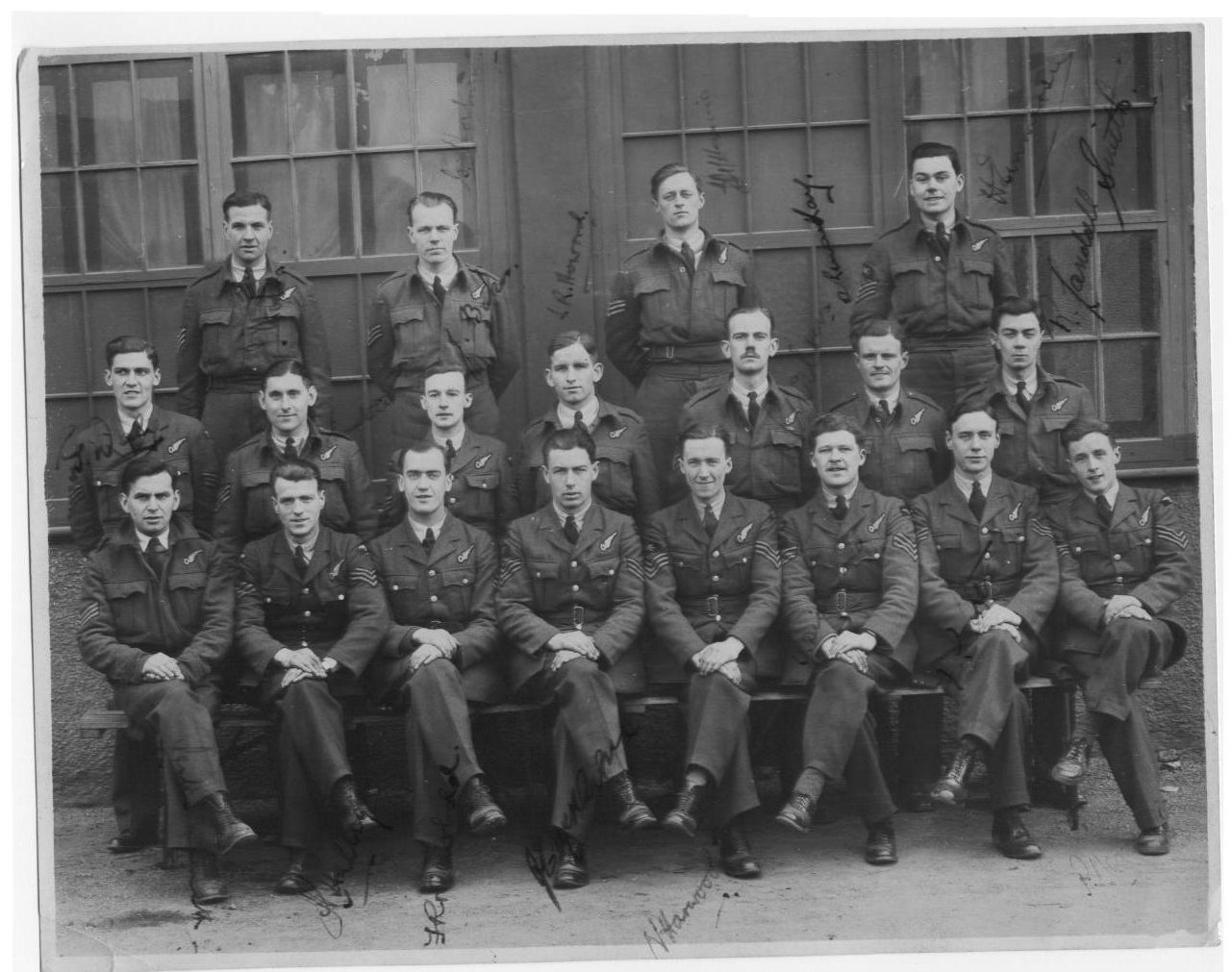
The wonderful image above was supplied by Diana, Renard Smiths
daughter. It is labelled:
The W/Op - Observers of 143 Squadron taken at Squires Gate RAF
Station on 1st March 1942.
Some of the names which Diana could make out were: N Harwood, R
Hally, Leslie M Smith, R S Daly, J Baker, L R Howard
If correct, at least Leslie M Smith from this group did not
survive the war having been killed with 143 Squadron in May
1943. Beaufighter JL887 went missing that day on a mission off
the Dutch coast.
Compiled by Dennis Burke, 2024, Dublin and Sligo. With thanks to Frank Newbold, Diana Ibbotson, Richard Morton and Jenna Brule-MacDonald. Also to the staff of the Irish Military archives and to Martin Gleeson. Other Sources, 143 Squadron ORB Dec 1941 to August 1942; RAFCommands forum,
